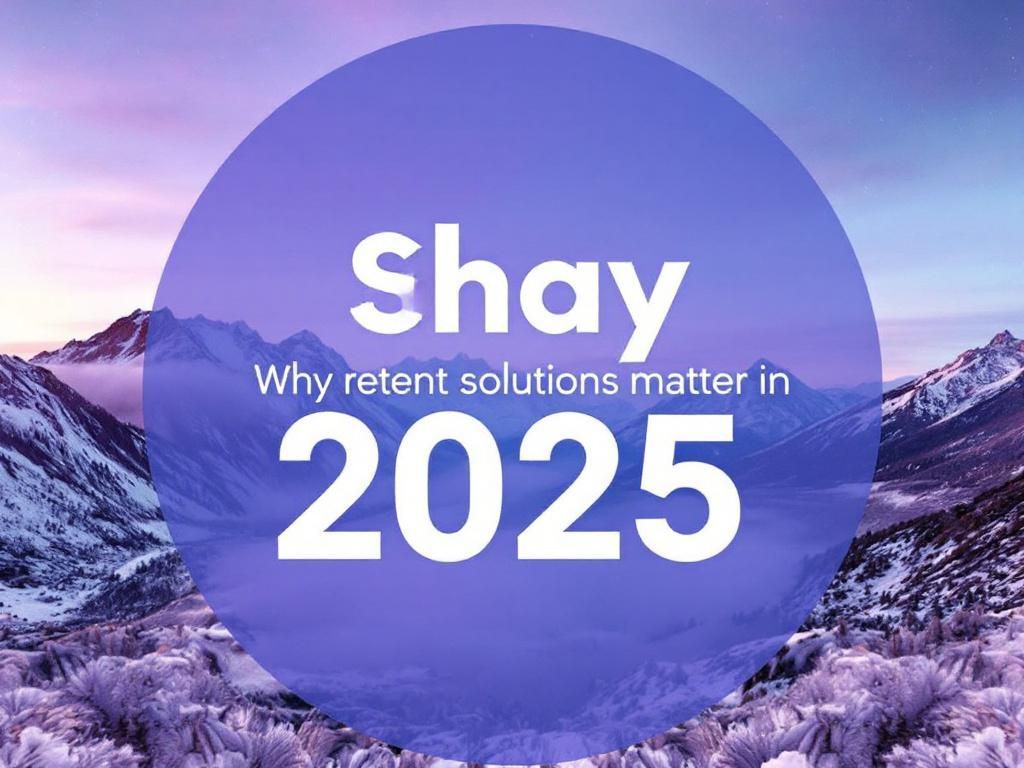Why Retention Solutions Will Be Crucial in 2025
Discover why retention solutions are essential for business success in 2025 and how they can impact customer loyalty and revenue.

As businesses navigate the complexities of the digital landscape, the importance of customer retention solutions has become increasingly evident. In 2025, competition will not only come from similar products and services but also from customer experiences that brands deliver. Retention strategies will need to evolve, incorporating advanced technologies and deeper customer insights to ensure loyalty and satisfaction.
Table of Contents
The Shift to Customer-Centric Models
In recent years, we’ve witnessed a fundamental shift from product-centric to customer-centric business models. This transformation reflects a deeper understanding of the value that long-term customer relationships can bring. Companies that prioritize customer retention can enjoy:
- Higher Lifetime Value (LTV)
- Reduced Churn Rates
- Increased Referrals
Defining Customer Lifetime Value
Customer Lifetime Value (LTV) is a crucial metric that estimates the total revenue a customer will generate during their relationship with a business. A higher LTV suggests that a company successfully retains its customers over extended periods.
Technological Advancements in Retention Solutions
As we move into 2025, technology will continue to play a significant role in shaping retention strategies. Businesses will need to leverage advanced tools to understand customer behavior and personalize their engagement. Key technologies include:
| Technology | Description |
|---|---|
| Artificial Intelligence | AI can analyze customer data to predict behaviors and offer tailored recommendations. |
| Machine Learning | Machine learning algorithms help identify patterns in customer interactions, allowing for proactive engagement. |
| Customer Relationship Management (CRM) Systems | Modern CRM systems integrate various data points to provide a comprehensive view of customer interactions, improving service delivery. |
| Chatbots | AI-driven chatbots enhance customer engagement by providing instant responses to queries. |
Data-Driven Decision Making
Data is the backbone of effective retention strategies. By harnessing analytics, businesses can make informed decisions that enhance customer satisfaction. This involves:
- Collecting customer data through various touchpoints.
- Analyzing behavioral trends and preferences.
- Implementing changes based on insights gathered.
Understanding Customer Feedback
Feedback mechanisms such as surveys and reviews are vital in identifying areas for improvement. Businesses must establish a culture where feedback is encouraged, respected, and acted upon. Methods to gather feedback include:
- Online Surveys
- Customer Interviews
- Social Media Listening
Building Emotional Connections
In a world where options are abundant, emotional connections can set a brand apart. Companies that foster loyalty through genuine relationships are more likely to retain their customers. Strategies include:
Personalization
According to recent studies, 80% of consumers are more likely to make a purchase when brands offer personalized experiences. Personalization can be achieved through:
- Segmenting customers based on behavior and preferences.
- Offering tailored recommendations and promotions.
- Creating customized communication strategies.
Community Engagement
Establishing a sense of community around your brand can enhance emotional connections. This can be done by:
- Creating online forums or groups for customers.
- Hosting events or webinars that add value.
- Encouraging user-generated content and testimonials.
Measuring Success in Retention Initiatives
To ensure that retention efforts are effective, businesses must measure their success through various metrics. Some essential metrics include:
| Metric | Description |
|---|---|
| Customer Churn Rate | The percentage of customers who stop using your product or service during a given timeframe. |
| Net Promoter Score (NPS) | A measure of customer satisfaction and loyalty based on their likelihood to recommend your brand. |
| Repeat Purchase Rate | The percentage of customers who make additional purchases after their initial transaction. |
Future Trends in Retention Strategies
As we approach 2025, several trends are poised to reshape customer retention strategies:
Increased Use of Subscription Models
Subscription-based services offer continual engagement and predictable revenue streams. They enhance retention by:
- Providing consistent value delivery.
- Creating a sense of dependency on the service.
- Facilitating easier upgrades and cross-selling opportunities.
Focus on Sustainability
Modern consumers are increasingly drawn to brands that champion sustainability. Companies focused on eco-friendly practices will resonate more with consumers, fostering loyalty.
Integration of Augmented Reality (AR)
AR technology can enhance customer experience by providing immersive interactions, thereby increasing engagement and retention. For instance, furniture stores can allow customers to visualize products in their own homes before making a purchase.
Conclusion
In 2025, the landscape of customer retention will be markedly different. As technology evolves, so too will the strategies businesses deploy to foster loyalty and engagement. By embracing a customer-centric approach and utilizing advanced analytics, companies can not only retain their existing customers but also create advocates who champion their brand. In a competitive market, the focus on retention solutions will become not just an option but a necessity for survival and growth.
FAQ
Why are retention solutions important for businesses in 2025?
Retention solutions are crucial in 2025 as they help businesses reduce churn rates, increase customer lifetime value, and foster brand loyalty in a competitive market.
How do retention solutions impact customer engagement?
Retention solutions enhance customer engagement by providing personalized experiences and timely communication, ensuring customers feel valued and connected to the brand.
What are the key benefits of implementing retention solutions?
Key benefits include improved customer satisfaction, reduced acquisition costs, enhanced brand reputation, and increased profitability through loyal customer bases.
What technologies are driving retention solutions in 2025?
In 2025, AI and machine learning technologies, customer relationship management (CRM) systems, and data analytics are driving effective retention solutions.
How can businesses measure the effectiveness of their retention solutions?
Businesses can measure the effectiveness of retention solutions through key performance indicators (KPIs) such as customer retention rate, net promoter score (NPS), and customer lifetime value (CLV).
What trends are shaping retention strategies in 2025?
Trends shaping retention strategies in 2025 include increased focus on customer experience, the use of predictive analytics, and the integration of omnichannel communication.






